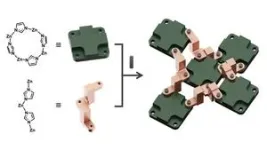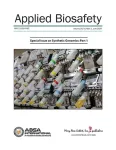(Press-News.org) Vienna, Austria: An international team of researchers has identified specific bacteria in the gut that are associated with both mice and humans developing an addiction to food that can lead to obesity. They have also identified bacteria that play a beneficial role in preventing food addiction.
The research is presented today (Thursday) at the Federation of European Neuroscience Societies (FENS) Forum 2024 and is published simultaneously in the journal Gut [1,2].
Professor Elena Martín-García, from the Laboratory of Neuropharmacology-NeuroPhar in the Department of Medicine and Life Sciences at the Universitat Pompeu Fabra, Barcelona, Spain, told the FENS Forum: “A number of factors contribute to food addiction, which is characterised by loss of control over food intake and is associated with obesity, other eating disorders and alterations in the composition of bacteria in the gut – the gut microbiome. Until now, the mechanisms underlying this behavioural disorder were largely unknown.”
Speaking before the FENS Forum, Professor Rafael Maldonado, who leads the Laboratory, said: “These results from our study may allow us to identify new biomarkers for food addiction and, most importantly, to evaluate whether the beneficial bacteria could be used as potential new treatments for this obesity-related behaviour, which, at present, lacks any effective therapeutic approaches. Potential new treatments could involve using beneficial bacteria and dietary supplementation.”
Prof. Martín-García used the Yale Food Addiction Scale (YFAS 2.0) to diagnose food addiction in mice and humans. It contains 35 questions for humans to answer, and these can also be grouped into three criteria for use in mice: persistent food-seeking, high motivation to obtain food, and compulsive behaviour.
She and her colleagues investigated the gut bacteria in mice who were and were not addicted to food and found an increase in bacteria belonging to a group called the Proteobacteria phylum and a decrease in bacteria belonging to the Actinobacteria phylum in the food-addicted mice. These mice also had a decrease in the amount of another type of bacteria called Blautia from the Bacillota phylum.
The researchers used the YFAS to classify 88 patients into those who were addicted or not addicted to food. Similar to the findings in mice, decreases in Actinobacteria phylum and Blautia were seen in those who were food-addicted and increases in Proteobacteria phylum. Further analyses showed how the findings in humans correlated with those in mice.
Prof. Martín-García said: “The findings in both mice and humans suggested that specific microbiota could be protective in preventing food addiction. In particular, the strong similarities in the amount of Blautia underlined the potential beneficial effects of this particular gut bacteria. Therefore, we investigated the protective effects of oral administration of lactulose and rhamnose, which are non-digestible carbohydrates known as ‘prebiotics’ that can increase the amount of Blautia in the gut. We did this in mice and found that it led to an increase in the abundance of Blautia in mice faeces in parallel with dramatic improvements in food addiction. We saw similar improvements when we gave the mice a species of Blautia called Blautia wexlerae orally as a probiotic.
“The gut microbiota signatures in both mice and humans suggest possible non-beneficial effects of bacteria belonging to the Proteobacteria phylum and potential protective effects of increasing the abundance of Actinobacterial and Bacillota against the development of food addiction.”
Prof. Martín-García says the findings show how bacteria in the gut influence brain function and vice versa. “We have demonstrated for the first time a direct interaction between the gut composition and brain gene expression, revealing the complex and multifactorial origin of this important behavioural disorder related to obesity. Understanding the crosstalk between alterations in behaviour and bacteria in the gut constitutes a step forward for future treatments for food addiction and related eating disorders.”
She also described work investigating how microRNAs (miRNAs) – small, single-stranded molecules that regulate gene expression and contribute to almost any cellular process – are involved in food addiction [3]. Changes in the expression of miRNAs may be involved in the mechanisms underlying the disorder.
The researchers used a technique called Tough Decoy (TuD) to inhibit specific miRNAs in the medial prefrontal cortex (mPFC) of brains of mice in order to produce mice that were vulnerable to developing food addiction. The mPFC is the part of the brain involved in self-control and decision-making. It was these mice that were also used in the study described above – the food-addicted mice.
They found that inhibition of miRNA-29c-3p promoted persistence of response and enhanced the vulnerability of the mice to develop food addiction. Inhibiting another miRNA called miRNA-665-3p promoted compulsive behaviour and vulnerability to food addiction.
Prof. Maldonado said: “These two miRNAs could act as protective factors against food addiction. This helps us to understand the neurobiology of the loss of eating control, which plays a crucial role in obesity and related disorders. To understand these mechanisms further, we are now exploring how the gut microbiota and miRNA expression in the brain interact in mice.”
Professor Richard Roche, Deputy Head of the Department of Psychology at Maynooth University, Maynooth, County Kildare, Ireland, is chair of the FENS communication committee and was not involved in the research. He said: “Compulsive eating and food addiction is a growing problem worldwide. There are many factors that contribute to it, in particular the environment that people live in and the availability of certain types of food. However, we’ve known for some time that there are probably contributing factors for eating disorders and the research by Professor Martín-García and colleagues shows how the different types of bacteria in the gut have an impact on brain function and vice versa in humans and mice. This understanding opens the way to developing potential new treatments for eating disorders, and we look forward to seeing more research in this area.”
(ends)
Notes
[1] “Neurobiological signatures associated with vulnerability to food addiction in mice and humans”, by Dr Elena Martín-García, Session S21: Mechanistic facets of resilience and vulnerability toward the diversity of challenges, 09.47-10.05 hrs, Thursday 27 June, Hall E: https://fens2024.abstractserver.com/program/#/details/presentations/162
[2] “Gut microbiota signatures of vulnerability to food addiction in mice and humans”, Samulénaite S, García-Blanco A, Mayneris- Perxachs J, et al. Gut, Epub ahead of print 27 June 2024. doi:10.1136/ gutjnl-2023-331445
[3] “A specific prelimbic-nucleus accumbens pathway controls resilience versus vulnerability to food addiction”, Domingo-Rodriguez et al., Nature Communications, (2020)11:782, https://doi.org/10.1038/s41467-020-14458-y
“miRNA signatures associated with vulnerability to food addiction in mice and humans”, Garcia-Blanco et al., The Journal of Clinical Investigation, 2022;132(10):e156281. https://doi.org/10.1172/JCI156281
END
Specific bacteria in your gut are involved in compulsive eating and obesity
New research shows how your brain and gut talk to each other
2024-06-27
ELSE PRESS RELEASES FROM THIS DATE:
More than a quarter of ‘healthy’ over-60s have heart valve disease, according to new research
2024-06-27
Almost 4,500 healthy and symptom-free over-60s were examined, with 28pc found to have heart valve disease
Age was found to be strongly associated with an increased incidence of significant heart valve disease
Study lays the foundation for more research into the potential role of screening in the elderly population
Peer-reviewed – Prospective Cohort Study - People
The sheer scale of undiagnosed heart valve disease in our ageing population has been revealed for the first ...
Sylvester Cancer Tip Sheet - June 2024
2024-06-26
BLOOD CANCER
Sylvester Expert Endorses FDA’s Recent Cancer Drug Approval
Mikkael Sekeres, M.D., chief of the Division of Hematology at Sylvester, who specializes in treating leukemia and myelodysplastic syndromes (MDS), expressed his support for the Food and Drug Administration’s recent approval of the drug imetelstat. The drug, a telomerase inhibitor, treats cancer-related anemia in patients with lower-risk MDS. “With approval of imetelstat to treat myelodysplastic syndromes, we finally have another approach ...
Playing youth sports linked to better mental health in adults
2024-06-26
COLUMBUS, Ohio – Adults who continuously played organized sports through their youth have fewer symptoms of anxiety and depression than those who never played or those who dropped out, a new study finds.
And those who dropped out of sports had poorer mental health than those who never played at all.
But many more people drop out of youth sports than play continuously until they are 18, said Chris Knoester, senior author of the study and professor of sociology at The Ohio State University.
“If you play and stick with sports, it’s ...
Researchers find genetic stability in a long-term Panamanian hybrid zone of manakins
2024-06-26
We often think of species as separate and distinct, but sometimes they can interbreed and create hybrids. When this happens consistently in a specific area, it forms what’s known as a hybrid zone. These zones can be highly dynamic or remarkably stable, and studying them can reveal key insights into how species boundaries evolve—or sometimes blur. In a new study published in Evolution, researchers at the University of Illinois Urbana-Champaign describe a hybrid zone between two manakin species in Panama that ...
Special Issue of Applied Biosafety focuses on synthetic genomics
2024-06-26
In its first special issue on Biosafety and Biosecurity Considerations of Synthetic Genomics, the first part of a two-part special issue of the peer-reviewed journal Applied Biosafety focuses on the growing availability of customizable nucleic acid sequences and genomes from commercial sources. The issue also describes the advancements in desktop synthesis devices that enable the creation of on-demand nucleic acids. Click here to read the special issue now.
The rapid technological advancements described in part one of this two-part special issue are raising concerns among biosecurity experts and policymakers. The manuscripts in this issue explore the challenges, opportunities, and ...
Simple new process stores CO2 in concrete without compromising strength
2024-06-26
By using a carbonated — rather than a still — water-based solution during the concrete manufacturing process, a Northwestern University-led team of engineers has discovered a new way to store carbon dioxide (CO2) in the ubiquitous construction material.
Not only could the new process help sequester CO2 from the ever-warming atmosphere, it also results in concrete with uncompromised strength and durability.
In laboratory experiments, the process achieved a CO2 sequestration efficiency of up to 45%, meaning that nearly ...
Osiris 39 examines the role of disability in the history of science
2024-06-26
Disability studies has gained prominence in recent years, transforming fields ranging from design to literary studies with insurgent approaches to access and representation. The newest volume of Osiris, “Disability and the History of Science,” extends this movement to ask how disability has been a central, if unacknowledged, force in the scientific disciplines and the history of science. The volume examines the many roles that disability and disabled people have played throughout the history of science, calling attention to the shaping of scientific knowledge production by disability.
Editors Jaipreet Virdi, Mara Mills, and Sarah F. Rose, in their introduction ...
AI-based Alphafold: Its potential impact on predictive medicine
2024-06-26
AlphaFold is an outstanding example of artificial intelligence’s computational capabilities in accurately predicting intricate protein structures. A new Review article explores AlphaFold’s recent advancements and its potential impact on predictive medicine. The article is published in the peer-reviewed journal AI in Precision Oncology. Click to read the articles now.
Vivek Subbiah, MD, from the Sarah Cannon Research Institute, and coauthors, describe a shift toward predictive medicine, in which AI, integrated with genomic data, ...
A heart of stone: Study defines the process of and defenses against cardiac valve calcification
2024-06-26
CHAMPAIGN, Ill. — The human body has sophisticated defenses against the deposition of calcium minerals that stiffen heart tissues, researchers at the University of Illinois Urbana-Champaign and collaborators at UCLA Health and the University of Texas at Austin found in a new study that provides the first detailed, step-by-step documentation of how calcification progresses.
“Heart disease is the leading killer annually — about 18 million deaths per year — and that number is growing. A large proportion is the result of calcification,” said study leader Bruce Fouke, a U. of I. professor of earth ...
Understanding quantum states: New FAMU-FSU research shows importance of precise topography in solid neon qubits
2024-06-26
Quantum computers have the potential to be revolutionary tools for their ability to perform calculations that would take classical computers many years to resolve.
But to make an effective quantum computer, you need a reliable quantum bit, or qubit, that can exist in a simultaneous 0 or 1 state for a sufficiently long period, known as its coherence time.
One promising approach is trapping a single electron on a solid neon surface, called an electron-on-solid-neon qubit. A study led by FAMU-FSU College of Engineering Professor Wei Guo that was ...
LAST 30 PRESS RELEASES:
New study shows how the spleen helps the immune system accept a transplant
New Mayo Clinic study advances personalized prostate cancer education with an EHR-integrated AI agent
Researchers identify novel therapeutic target to improve recovery after nerve injury
Microbes in breast milk help populate infant gut microbiomes
Reprogramming immunity to rewrite the story of Type 1 diabetes
New tool narrows the search for ideal material structures
Artificial saliva containing sugarcane protein helps protect the teeth of patients with head and neck cancer
Understanding the role of linear ubiquitination in T-tubule biogenesis
Researchers identify urban atmosphere as primary reservoir of microplastics
World’s oldest arrow poison – 60,000-year-old traces reveal early advanced hunting techniques
Bristol scientists discover early sponges were soft
New study uncovers how rice viruses manipulate plant defenses to protect insect vectors
NSF–DOE Vera C. Rubin Observatory spots record-breaking asteroid in pre-survey observations
Ribosomal engineering creates “super-probiotic” bacteria
This self-powered eye tracker harnesses energy from blinking and is as comfortable as everyday glasses
Adverse prenatal exposures linked to higher rates of mental health issues, brain changes in adolescents
Restoring mitochondria shows promise for treating chronic nerve pain
Nature study identifies a molecular switch that controls transitions between single-celled and multicellular forms
USU chemists' CRISPR discovery could lead to single diagnostic test for COVID, flu, RSV
Early hominins from Morocco reveal an African lineage near the root of Homo sapiens
Small chimps, big risks: What chimps show us about our own behavior
We finally know how the most common types of planets are created
Thirty-year risk of cardiovascular disease among healthy women according to clinical thresholds of lipoprotein(a)
Yoga for opioid withdrawal and autonomic regulation
Gene therapy ‘switch’ may offer non-addictive pain relief
Study shows your genes determine how fast your DNA mutates with age
Common brain parasite can infect your immune cells. Here's why that's probably OK
International experts connect infections and aging through cellular senescence
An AI–DFT integrated framework accelerates materials discovery and design
Twist to reshape, shift to transform: Bilayer structure enables multifunctional imaging
[Press-News.org] Specific bacteria in your gut are involved in compulsive eating and obesityNew research shows how your brain and gut talk to each other







